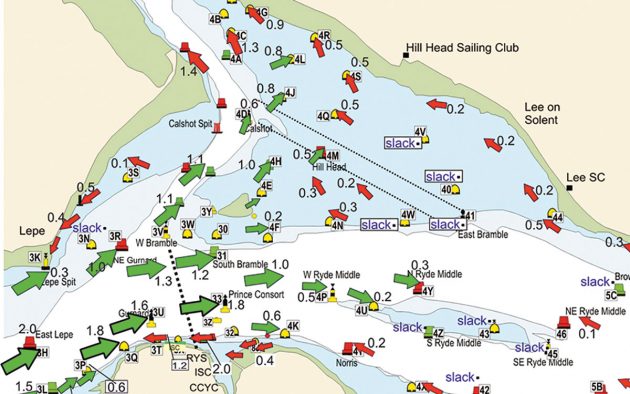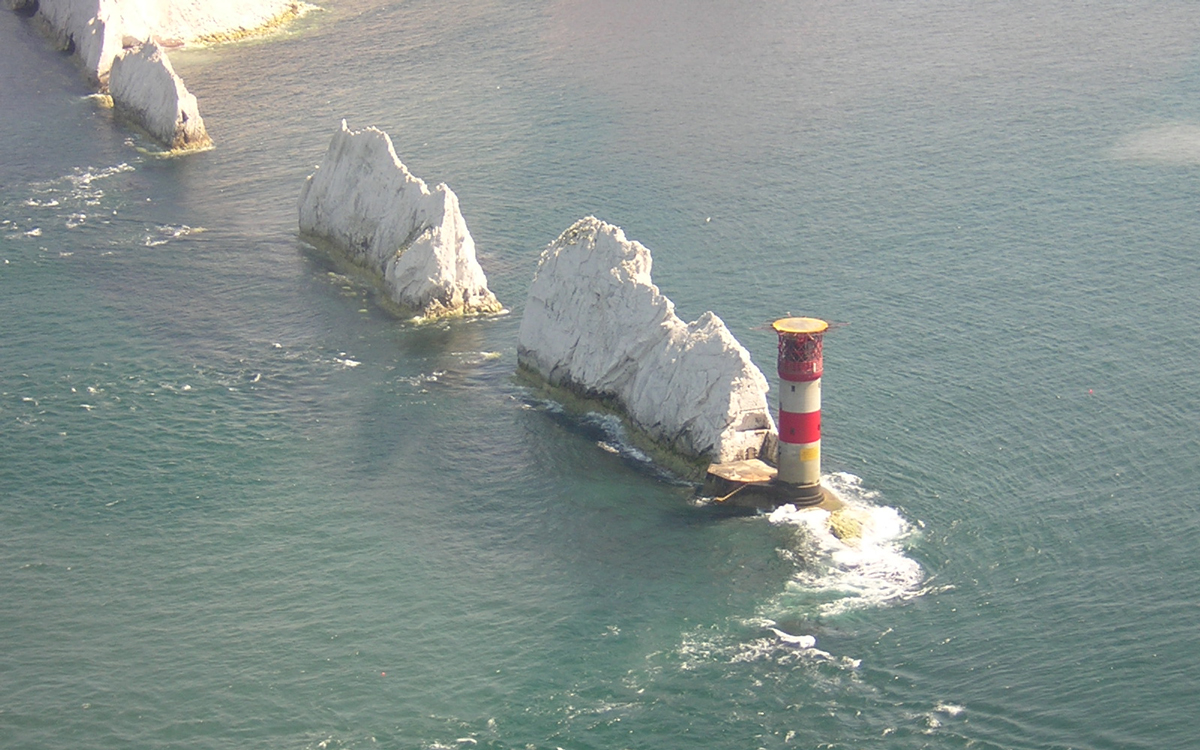If you are racing a displacement boat and see a strong tidal stream on a start line but think you can simplify the situation to, say, two knots pushing you over the line, then you are probably missing something vital, writes Mike Broughton
Rather like the poker player who unwittingly plays into a trap, starting in a strong steam easily ensnares the unwary. To reduce this risk, getting to the start area early is strongly recommended to carry out some pre-start ‘due diligence’.
First, you need the best tidal stream information you can lay your hands on (the highest resolution). Then you need to compare the ‘forecast’ stream with what is actually happening. Inevitably there is a difference which could be due to factors including particularly high or low pressure, a lot of recent rainfall, or the tidal stream simply running late.
Do a quick tidal survey of the start area, comparing what you are seeing with the prediction. Never sail past a buoy, beacon or committee boat without looking down and checking on the stream. If you are running race software, does the measured current concur? Is the stream due to change in the next 30 minutes, and if so, how?
Article continues below…
Tidal streams: How to read the waves to gain a sailing advantage
Navigators need to have a close knowledge of tidal streams and currents. The latest studies show just how multifarious even…
New Fastnet course: How the changes will affect this offshore classic
Discovering that the Rolex Fastnet Race will finish in Cherbourg for 2021 and 2023, I was initially very open minded…
Using transits
Start line transits are part of your starting due diligence, so make sure you brief the person calling the bow on the tidal stream. While getting a bow transit (lining up the start line with a mark on a nearby shoreline), maybe consider getting a second transit for your starting position at the ‘back of the bus’?
When beating to windward, a layline is the highest angle or bearing you have to sail to just make it to a mark or anchored boat. Two knots of tidal stream can dramatically change these angles, particularly in light winds. Knowing these ‘tidally adjusted laylines’ is powerful information when lining up your approach to start.
Assuming you want to start at the pin end, the trick is to position yourself about a minute back and sail into the pin, ideally picking a transit between the buoy and the shore as you start. Then refine that starting position or transit with a couple more practice runs.
That way, even in the heat of the battle when other boats get involved, you already have a transit that you know works. Before the days of foiling, America’s Cup yachts would practice this over and over to help hone their approach to the start before the match race duel begins.
Tactical navigation software can help a great deal here, but visible transits are hard to beat. Software is great for giving you time to the line from over 10 boat lengths out, whereas the human eye gets better as the distance gets closer. Calibrating your eye with some practice makes it even better!
Once we have a handle on the tidal stream we can then consider how things are likely to play out. Looking upwind, if the tidal stream is moving right to left we can start to anticipate how that will affect the fleet. In particular, once tidally adjusted there may be a wider angle on the layline into the start, meaning that a gap opens near the committee boat in the final countdown. This makes a late run into the committee boat less risky, even on a busy start line, with a ‘cross tide start’.
High-risk strategy
Meanwhile, at the pin end it is high risk with the tidal stream sweeping boats towards the pin. It is easy to mistime your start in these conditions and see a pile up at the pin. You sometimes even get boats head to wind, pinned to the pin. If you get below the port layline to the pin, then it is not going to be your day as you will need to do some sailing on port tack to start and that might be tricky in a busy fleet with a squadron of boats bearing down on you on starboard tack.
With the tidal stream running left to right, then the pin becomes easier, but the starboard end can be very high tariff, so ‘crash helmets on’ if you get it wrong! An inner distance mark will help protect the committee boat, but fenders may still be required.
Probably only one boat will get a good start, so it might make sense to start some way in from the end of the line in these conditions.
When the tide is running directly with you, getting close to the start line early becomes the risky option. Practising with timed runs helps build confidence here. It is useful to know how long it will take for you to sail a boat length when up to speed. Hence if it is taking 10 seconds to sail 1.4 boat lengths, then if you are outside six boat lengths at 40 seconds to the start you can ‘pull the trigger’ and move to full speed mode.
Navigation software helps a great deal but it is also useful to have a good feel for how long your boat takes to accelerate in the prevailing conditions.
Starting ‘down tide’ in light winds, having a spinnaker ready to claw your way back over the line can be a wise move. If recalls are called on a VHF radio then tweak the volume up, particularly when the tidal stream is trying to push you over early.
On reaching starts, timed runs work well in a tidal stream – you might be able to utilise a buoy set back from the line or, when close to a shoreline, use a second transit about one minute back from the line.
Finally, with a tidal stream against you on the start line, having confidence to run in early, often ahead of the pack, can make big gains. You already know the answer to achieving this… practice, which helps you calibrate your eye to the conditions of the day.
 About the author
About the author
Mike Broughton is a pro race navigator who has won many titles including World and European championships. He is a qualified MCA Master to captain superyachts and previously had a successful career in the Fleet Air Arm flying Sea King and Lynx helicopters.
First published in the January 2019 issue of Yachting World.







 About the author
About the author